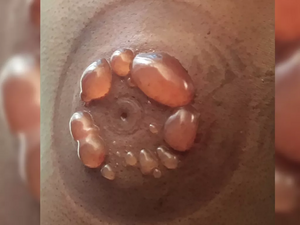In the realm of holistic wellness, Hijama Treatment has emerged as a time-honored practice with roots tracing back to ancient civilizations. Offering a natural approach to health and wellbeing, Hijama has gained popularity for its therapeutic benefits and ability to promote balance within the body. In this comprehensive guide, we delve into the essentials of Hijama Treatment, exploring its history, methodology, benefits, and considerations for those seeking to incorporate this traditional therapy into their wellness routine.

Understanding Hijama Treatment
Hijama Treatment, also known as cupping therapy, is an ancient healing modality that involves the application of cups to specific points on the body to create suction. This gentle suction draws stagnant blood and toxins to the surface, promoting circulation, detoxification, and overall healing. While Hijama has been practiced for centuries in various cultures, its resurgence in modern times reflects a growing interest in holistic approaches to health and wellness.
The History of Hijama
The origins of Hijama can be traced back to ancient Egypt, China, and the Middle East, where it was used to treat a wide range of ailments. In Islamic tradition, Hijama holds special significance, as it is believed to have been practiced by the Prophet Muhammad (peace be upon him) and is mentioned in several Hadiths (sayings of the Prophet). Over time, Hijama spread to other parts of the world, evolving into different techniques and variations while retaining its core principles of promoting health and vitality.
The Methodology of Hijama
Hijama Treatment involves the use of specialized cups, typically made of glass, plastic, or bamboo, which are placed on the skin and then heated to create a vacuum. This vacuum creates suction, drawing stagnant blood and toxins to the surface, where they can be safely removed. Depending on the individual's condition and the practitioner's expertise, Hijama may be performed on various areas of the body, including the back, shoulders, legs, and abdomen.
Benefits of Hijama Treatment
1. Pain Relief
Hijama is often used to alleviate pain and discomfort associated with conditions such as migraines, muscle tension, and joint pain. By promoting circulation and releasing tension, Hijama can provide relief from acute and chronic pain, allowing individuals to experience greater comfort and mobility.
2. Detoxification
The suction created during Hijama helps to draw toxins and impurities from the body, promoting detoxification at a cellular level. This detoxifying effect can help to improve overall health and wellbeing, leaving individuals feeling refreshed and revitalized.
3. Improved Circulation
By enhancing blood flow to the treated areas, Hijama stimulates circulation, delivering oxygen and nutrients to the cells while removing metabolic waste products. This improved circulation can aid in healing injuries, reducing inflammation, and promoting overall vitality.
4. Stress Reduction
Hijama has been shown to have a calming effect on the nervous system, making it an effective tool for stress reduction and relaxation. Many individuals report feeling a sense of peace and tranquility following a Hijama session, helping them to manage stress and anxiety more effectively.
Considerations for Hijama Treatment
While Hijama offers numerous benefits, it's essential to approach this therapy with caution and awareness. Here are some considerations to keep in mind before undergoing Hijama Treatment:
1. Qualified Practitioners
Seek out experienced and qualified practitioners who have received proper training in Hijama techniques. Verify their credentials and inquire about their experience and expertise before scheduling a session.
2. Hygiene and Safety
Ensure that the Hijama equipment and facilities are clean, sterile, and up to standard. Hygiene and safety should be a top priority to minimize the risk of infection or other complications.
3. Medical History
Discuss your medical history and any existing health conditions with the practitioner before undergoing Hijama Treatment. Certain conditions may require special considerations or contraindicate Hijama, so it's essential to be transparent about your health status.
4. Aftercare
Follow any post-treatment instructions provided by the practitioner to ensure optimal healing and recovery. This may include avoiding strenuous activity, staying hydrated, and applying soothing balms or oils to the treated areas.
Conclusion
As interest in holistic wellness continues to grow, Hijama Treatment offers a time-tested approach to promoting health and vitality. Rooted in ancient tradition yet relevant in modern times, Hijama provides a natural and effective way to address a variety of health concerns, from pain relief to detoxification and stress reduction. By understanding the essentials of Hijama Treatment and approaching it with care and mindfulness, individuals can harness its healing power to elevate their health and wellbeing. Whether you're seeking relief from pain, a detoxifying cleanse, or simply a moment of relaxation, Hijama may hold the key to unlocking your body's innate healing potential.
